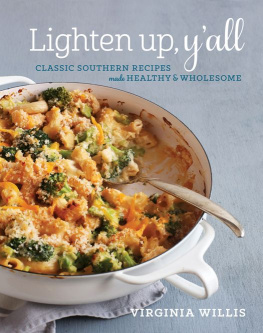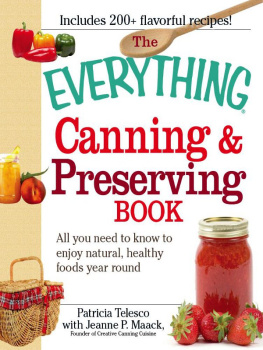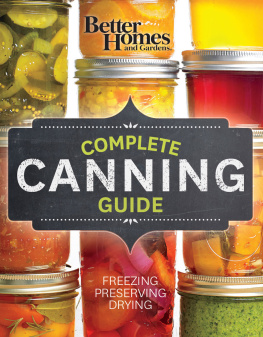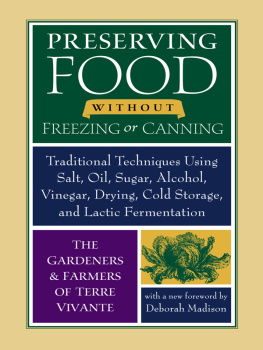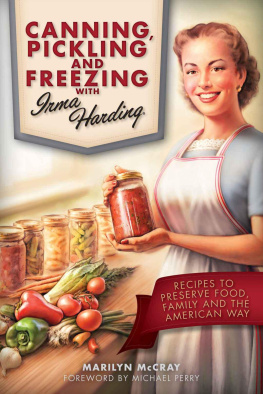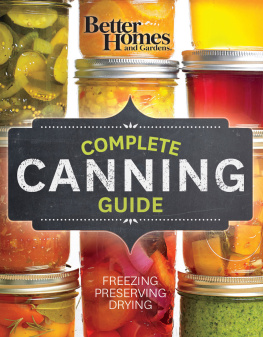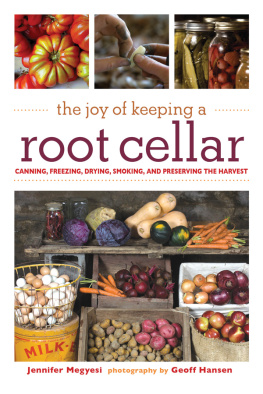Willis - Fresh food in a jar : pickling, freezing, drying & canning made easy
Here you can read online Willis - Fresh food in a jar : pickling, freezing, drying & canning made easy full text of the book (entire story) in english for free. Download pdf and epub, get meaning, cover and reviews about this ebook. year: 2016, publisher: Globe Pequot, genre: Children. Description of the work, (preface) as well as reviews are available. Best literature library LitArk.com created for fans of good reading and offers a wide selection of genres:
Romance novel
Science fiction
Adventure
Detective
Science
History
Home and family
Prose
Art
Politics
Computer
Non-fiction
Religion
Business
Children
Humor
Choose a favorite category and find really read worthwhile books. Enjoy immersion in the world of imagination, feel the emotions of the characters or learn something new for yourself, make an fascinating discovery.

Fresh food in a jar : pickling, freezing, drying & canning made easy: summary, description and annotation
We offer to read an annotation, description, summary or preface (depends on what the author of the book "Fresh food in a jar : pickling, freezing, drying & canning made easy" wrote himself). If you haven't found the necessary information about the book — write in the comments, we will try to find it.
Fresh food in a jar : pickling, freezing, drying & canning made easy — read online for free the complete book (whole text) full work
Below is the text of the book, divided by pages. System saving the place of the last page read, allows you to conveniently read the book "Fresh food in a jar : pickling, freezing, drying & canning made easy" online for free, without having to search again every time where you left off. Put a bookmark, and you can go to the page where you finished reading at any time.
Font size:
Interval:
Bookmark:

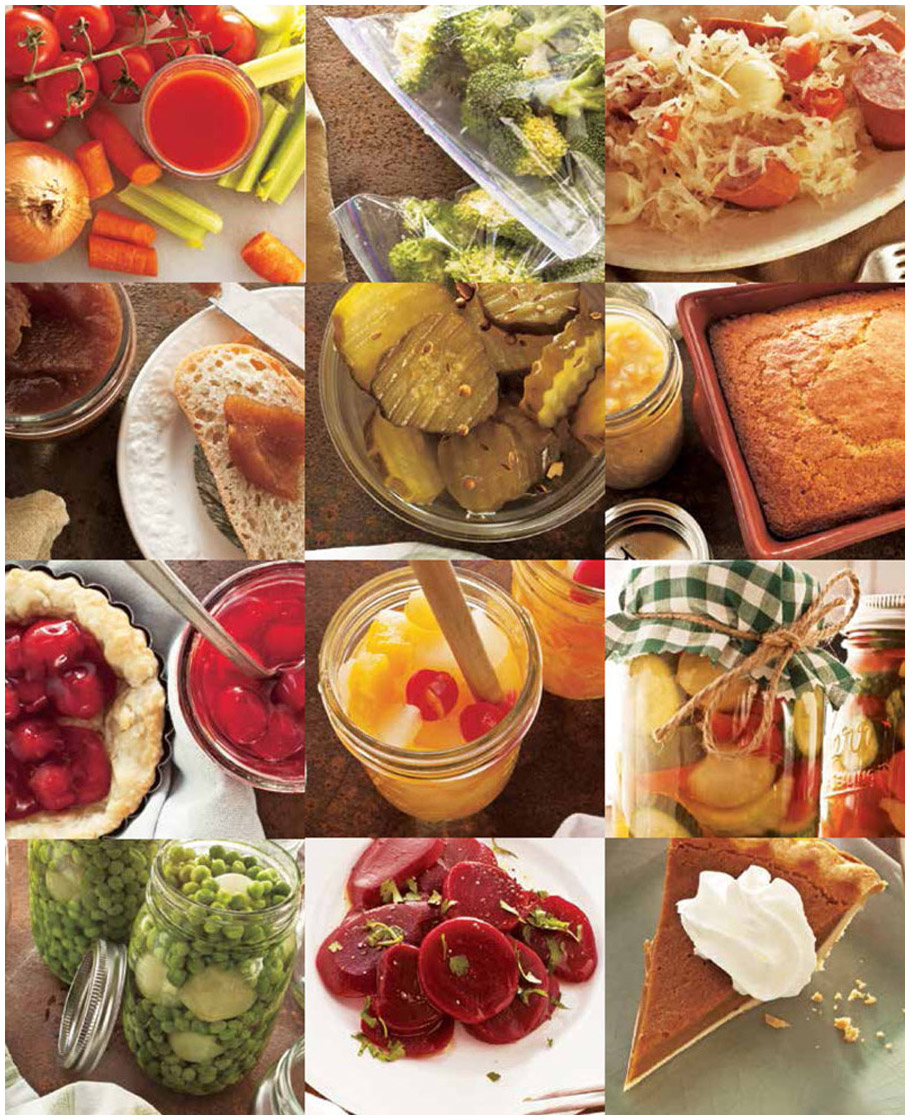
Globe
Pequot
An imprint of Rowman & Littlefield
Distributed by NATIONAL BOOK NETWORK
Copyright 2016 by Rowman & Littlefield
All rights reserved. No part of this book may be reproduced in any form or by any electronic or mechanical means, including information storage and retrieval systems, without written permission from the publisher, except by a reviewer who may quote passages in a review.
British Library Cataloguing in Publication Information Available
Library of Congress Cataloging-in-Publication Data Available
ISBN 978-1-4930-2453-7 (paperback)
ISBN 978-1-4930-2454-4 (e-book)
 The paper used in this publication meets the minimum requirements of American National Standard for Information SciencesPermanence of Paper for Printed Library Materials, ANSI/NISO Z39.48-1992.
The paper used in this publication meets the minimum requirements of American National Standard for Information SciencesPermanence of Paper for Printed Library Materials, ANSI/NISO Z39.48-1992.
To my husband, Steve: Thanks for doing the housework again while I write!
Id like to thank my hardworking agent, Barb Doyen; friendly, helpful editors, Lara Asher and Katie Sharp; and artistic photographer, Viktor Budnik, for their help in making this book a success.
I would like to say thanks to everyone at Globe Pequot and to Kim Willis. It is a real pleasure to be on a team with great people. Thank you also goes to my crew of gifted and talented people: Claire Stancera wonderful and great food stylistcreated beautiful food to shoot; Celeste kept us on schedule and did all the shopping for the book; and Kimmi, a truly great assistant.
Cheers,
Viktor Budnik
Some of you may have helped someone else can or preserve food when you were young, but many of you are at least a generation away from knowing anyone who actually preserved some of his or her own food. You may be interested in knowing how to preserve food but dont know how to start. This book was written to give you a quick and easy introduction to the basics of preserving your own food.
Our ancestors preserved food because it was the only way to ensure that their family had a good variety of foodand enough foodover the winter months. People grew their own produce or bought it locally and spent a great deal of the summer preserving it for winter. It was survival.
Then freezers, refrigerated trucks, and chilled grocery cases were introduced, which made finding fresh food in the grocery store easier. Women increasingly worked outside the home, and there was less time to preserve food at home. Grocery food was cheap and available, and most people stopped preserving food at home.
In the 1970s many people became interested in survival and back-to-the-land movements, and canning and other methods of home food preservation enjoyed a brief spike in popularity. That soon ebbed as people found that living off the land was harder than they planned, and those who did find it comfortable began to age and look for easier harvests.
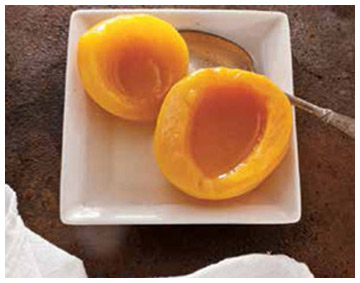
Forty years later canning and other methods of home food preservation are again drawing interest. This time its not because we cant get cheap food of almost any kind in any season, but because we want to control the quality and safety of the food we eat. We actually want better, not cheaper, food. We want to eat locally and seasonally, which is ecologically sound, but not feel deprived when some foods are out of season. We also want to be able to preserve that healthy, local food so we dont have to resort to chemical-laden food, picked green, handled by who knows who, and shipped thousands of miles when the season is over.
When you preserve food at home, you control the quality of the food, the cleanliness of its preparation, and its seasonings. Because you and those you love are going to eat that food, you will do everything you can to make sure the food is safe to eat.
Some of you are also frugal and feel that preserving food is a good way to save money. After your initial investment in a canner or freezer and other supplies, you may actually save money, especially if you have an abundance of homegrown food. But saving money shouldnt be your only motivation.
If prepared properly, home-preserved food is as safe, if not safer, than purchased food. It has more vitamins, fewer chemicals, and a smaller chance of causing food-borne illnesses than commercially prepared food. And most importantit tastes better! You can customize home-preserved food to your taste preferences.
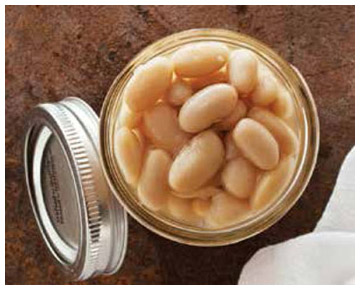
Preserving food at home is easier than it used to be, thanks to modern food prep machinery, such as food processors, and the fact that modern homes often have air-conditioning to offset hot kitchens. But food preservation still requires time and close attention to details.
Start small; dont start with six bushels of produce to can on your first attempt. Read the recipe carefully, paying attention to everything youll need and the amount of time it takes to complete that recipe. In this book ingredients are listed in the order they are used. Allow yourself plenty of time. Its a rush-rush world, but preserving your own food is not a project to rush through or do haphazardly.
Food-preservation recipes, especially canning recipes, cannot be experimented with safely, unlike other types of cooking. If the recipe doesnt give you permission to adjust ingredients, then dont do so. Measure carefully and accurately. Some ingredients, or the amount of an ingredient in ratio to other ingredients, affect the safety of the stored food. Always follow the type of processing recommended, and the amount of time it requires, exactly. Throughout the book, each canning recipe includes a separate processing chart for easy reference.
Use modern recipes, especially for canning. Modern recipes are generally based on research done by the USDA and universities across the country to provide the safest and most nutritious foods. The recipes in this book are carefully based on USDA procedures and recommendations.
If you want safe, nutritious, and flavorful food, you have to start with it. Dont use old, spoiled, overripe, diseased, or damaged produce or meat for preserving. Use any damaged or overripe food immediately and preserve your best food. Canning, drying, or freezing spoiled food wont make it safe to eat.
Even if you start with the best quality, safest food, you can contaminate it during preparation. Keep your hands clean and scrub your sink and countertops before beginning to prepare food. Wash jars and containers before filling with food, and sterilize jars if the recipe calls for it.
During preparation, cover any food waiting to be used to prevent insect contamination. Always scrub cutting boards and utensils used on meat with hot water and soap, then rinse well before using them on produce or other food.
E. coli, salmonella, and botulism are responsible for most cases of food poisoning in home-preserved foods. All three are preventable if you follow all proper cleaning, processing, and recipe instructions. Botulism is by far the most deadly and almost always occurs in low-acid foods such as vegetables and meat that are canned. Be particularly careful canning these foods.
Font size:
Interval:
Bookmark:
Similar books «Fresh food in a jar : pickling, freezing, drying & canning made easy»
Look at similar books to Fresh food in a jar : pickling, freezing, drying & canning made easy. We have selected literature similar in name and meaning in the hope of providing readers with more options to find new, interesting, not yet read works.
Discussion, reviews of the book Fresh food in a jar : pickling, freezing, drying & canning made easy and just readers' own opinions. Leave your comments, write what you think about the work, its meaning or the main characters. Specify what exactly you liked and what you didn't like, and why you think so.

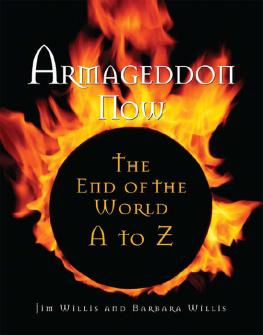


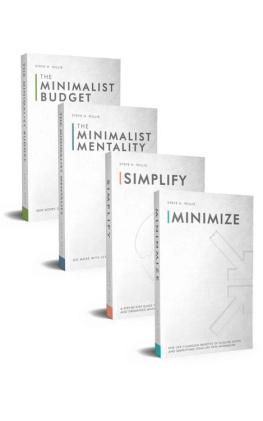
![Willis - Beer: a cookbook: good food made better with beer: [recipes]](/uploads/posts/book/224368/thumbs/willis-beer-a-cookbook-good-food-made-better.jpg)
